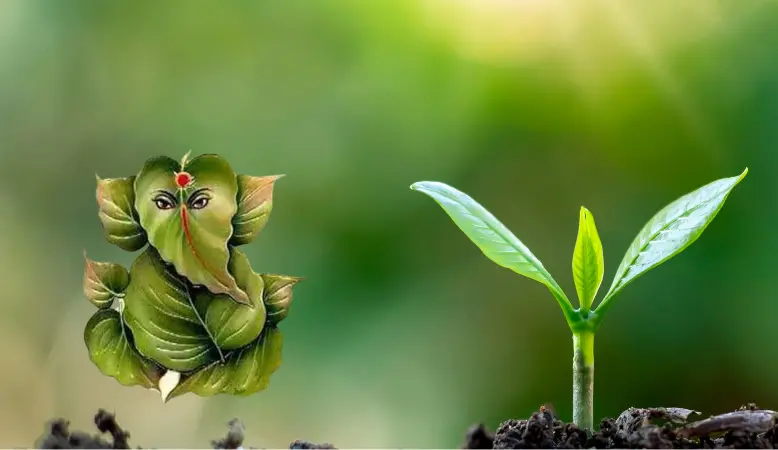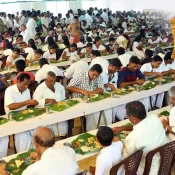The Sacred Science of Ganesh Chaturthi: A Tale of Tradition and Ecology
Every year, as the monsoon clouds recede and the sun begins to shine a little brighter, the air across India hums with anticipation. The streets buzz with activity as artisans, families, and communities prepare for one of the most beloved festivals in Hindu culture—Ganesh Chaturthi. It is a time of joy, devotion, and celebration, but beneath the surface of this vibrant festival lies a deeper story, one that intertwines spirituality with science, ecology with tradition.
A Lesson from a Wise Teacher
When I was a child, Ganesh Chaturthi was more than just a festival; it was a time of wonder. I remember vividly the day our school teacher, an elderly man with a kind smile and the wisdom of a pundit, shared with us the story behind this sacred celebration. It wasn’t just about the festivities, he explained, but about the intricate relationship between our cultural practices and the natural world.
The Timing of Ganesh Chaturthi: A Deliberate Choice
Ganesh Chaturthi is celebrated during the Bhadra month of the Hindu calendar, which typically falls between August and September. This period is significant because it marks the transition between two critical phases of the Indian monsoon—the Southwest Monsoon, which drenches most of the country from June to September, and the Northeast Monsoon, which follows in some regions.
“Why is this important?” our teacher asked, his eyes twinkling with the promise of a revelation. “Because this timing is no coincidence. The festival is perfectly positioned within the cycle of nature, aligning with the season when water bodies across India are brimming with fresh monsoon rain.”
He went on to explain that during the Southwest Monsoon, India’s rivers, lakes, and ponds are filled to the brim. This rainwater brings with it not only life but also silt—a fine, fertile soil deposited by the flow of water. While this silt is rich in nutrients, too much of it can choke the water bodies, reducing their capacity and disrupting the natural balance.
The Eco-Friendly Tradition of Clay Idols
It was at this point that our teacher introduced us to the heart of the story: the Ganesha idol. Traditionally, the idol is crafted from clay, and this is no arbitrary choice. The clay used to create the idol is taken from the very water bodies that the monsoon has filled. This practice serves a dual purpose. First, it helps in desilting the water bodies, removing excess silt that could otherwise clog the flow of water. Desilting water bodies during Ganesh Chaturthi helps remove excess silt, allowing water to flow more freely and seep deeper into the ground, naturally replenishing groundwater levels and ensuring sustainable water sources for future use. Second, it provides a source of income for local artisans who skillfully mold the clay into the beloved image of Lord Ganesha.
For ten days, the idol is worshipped with great reverence. Prayers are offered, songs are sung, and Ganesha is adorned with turmeric, flowers, and other items rich in medicinal qualities. Turmeric, our teacher pointed out, is not just a symbolic offering but a powerful antimicrobial agent. It has been used for centuries in traditional medicine to treat wounds and infections, and here, during Ganesh Chaturthi, it plays a crucial role in maintaining the health of both the devotees and the environment.
The Science of Visarjan: Rejuvenating the Earth
The culmination of the festival is marked by Visarjan, the immersion of the Ganesha idol in a water body. This is perhaps the most emotional moment of the festival, as devotees bid farewell to their beloved deity with chants of “Ganpati Bappa Morya,” asking him to return the following year.
But Visarjan is not merely a ritual; it is an act of ecological significance. When the clay idol is immersed in water, the clay begins to dissolve, returning to the earth from which it came. This process is deeply symbolic, representing the cycle of life and death, creation and dissolution. But it also has a practical aspect—by dissolving in the water, the clay seals the waterbed, helping to preserve the water and prevent it from seeping away. This is particularly important in regions where water scarcity is a concern.
Moreover, the turmeric and other medicinal items used in the puja act as natural disinfectants. As the idol and its offerings are immersed, the turmeric dissolves in the water, killing harmful bacteria and pests, ensuring that the water remains clean and safe for the aquatic life that depends on it. Even the food items offered to Ganesha during the festival serve a purpose—they provide sustenance for fish and other aquatic creatures, helping to maintain the balance of the ecosystem.
A Lesson in Sustainability
As our teacher concluded his tale, we were left in awe of the profound wisdom embedded in our cultural practices. Ganesh Chaturthi, we realized, is not just a celebration of the birth of Lord Ganesha; it is a celebration of life itself, of the intricate balance between humanity and nature.
“Remember this,” our teacher said, his voice filled with a quiet passion. “The festivals we celebrate are not just for us; they are for the earth, for the air we breathe, the water we drink. They are a reminder that we are all connected, that our actions have consequences, and that with every prayer, every offering, we are shaping the world around us.”
His words have stayed with me ever since, and every year, as Ganesh Chaturthi approaches, I find myself reflecting on the deep connections between tradition and ecology. In recent years, there has been a growing awareness of the need to return to these eco-friendly practices, to shun the harmful Plaster of Paris (POP) idols and toxic chemical paints that have become common in the name of convenience. Instead, we are encouraged to embrace the wisdom of our ancestors, to choose clay idols, natural dyes, and sustainable practices that honor both the deity and the earth.
The Call to Action
As we prepare to celebrate Ganesh Chaturthi this year, let us do so with a renewed sense of purpose. Let us choose to worship with eco-friendly clay idols, knowing that in doing so, we are not only honoring Lord Ganesha but also playing our part in protecting the environment. Let us remember the lessons taught by our ancestors, and by wise teachers like the one who shared this story with me.
By celebrating Ganesh Chaturthi in the way it was intended, we can ensure that this beautiful tradition continues to thrive, not just as a religious festival, but as a powerful example of how humanity can live in harmony with nature. So, as you bring Lord Ganesha into your home this year, remember that you are also inviting a deeper understanding of our place in the world—one where faith, science, and ecology come together in a sacred dance of life.
The tradition and culture of respecting parents in India
Before ending this blog, I will narrate another story told by my teacher about Ganesha and how it emphasizes respect towards ones parents is more important than the world itself.
Ganesha had a younger brother called as Karthikeya. Both would get along well but, just like all other siblings, they would have moments of arguments and fights. On one such day, Ganesha and Karthikeya both ended up finding a unique fruit in the forest and grabbed it together. They refused to share it with each other and started claiming the fruit for themselves.
When they reached Mount Kailash and presented this predicament to Shiva and Parvati, Shiva made a proposition. He recognized the fruit and said that this fruit is known to grant immortality and extensive knowledge when eaten by the rightful bearer of it. To choose who gets it, Shiva proposed a challenge. He asked Ganesha and Karthikeya to circumvent their world 3 times. Whoever would do so first and return to Mount Kailash, would be the rightful owner of the fruit.
Karthikeya immediately hopped onto his pet peacock and flew speedily to complete three revolutions across the Earth. Ganesha was a little stocky compared to Karthikeya and his pet was a rat who couldn’t fly. Having listened to Shiva’s proposal properly, Ganesha started walking around Shiva and Parvati and completed three circles around them. When asked by Shiva, Ganesha replied that Shiva had asked them to circumvent their world. And for Ganesha, his parents were more than the world. They were the entire universe.
Shiva was touched and impressed by Ganesha’s wisdom and saw him as the rightful owner of the fruit.






